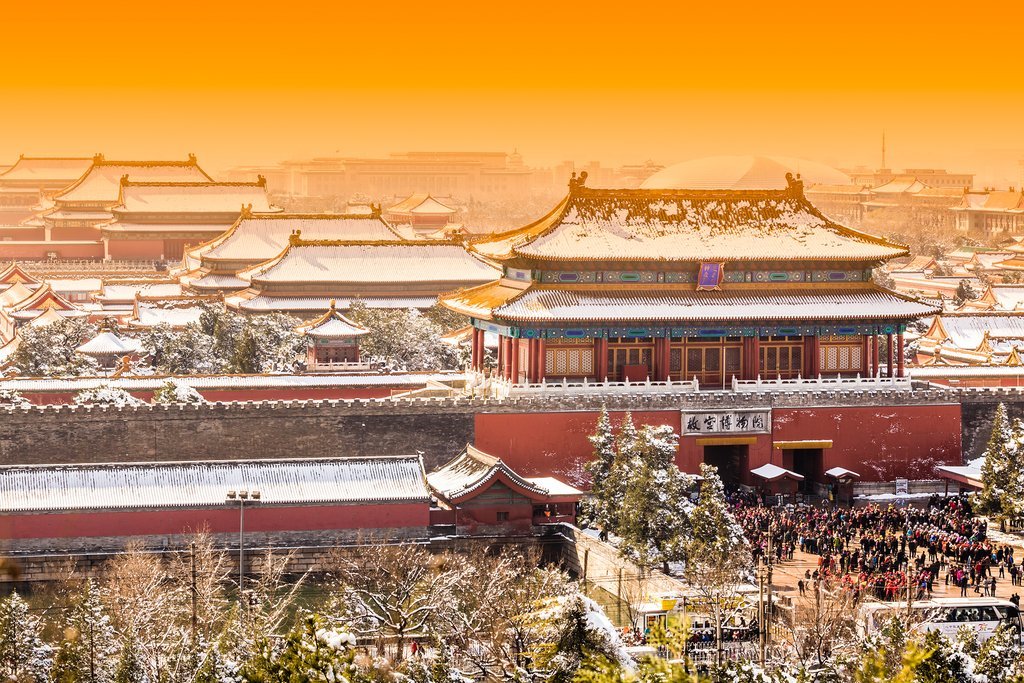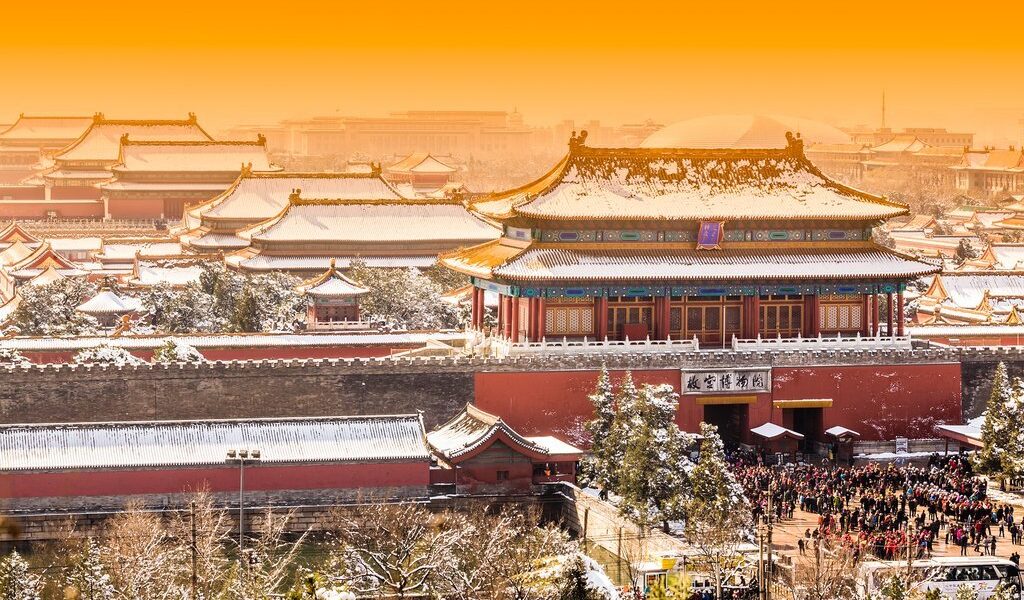
Timing is everything. Unless you want to partake in the world’s largest migration, it’s best to time your trip before or after Spring Festival, the Chinese New Year, a two-week festival that begins on January 25 in 2020 and February 12 in 2021 and February 1 in 2022 (timing is based on the lunar calendar). Most businesses close during the holiday as those who can afford it head home for the holidays. Traveling post-holiday can be a bargain. Those brave enough to face the fierce cold that blankets much of China in January are rewarded with a spectacular winter wonderland.
## China in January: A Comprehensive Guide
January in China presents a diverse tapestry of experiences, from the frosty landscapes of the north to the balmy beaches of the south. While much of the country embraces the chill of winter, certain regions offer a welcome respite, and even the cold brings unique opportunities for exploration and cultural immersion. Let’s delve into what you can expect when traveling to China in January.
**Weather in January**
Across a significant portion of China, January signifies the heart of winter, with temperatures plummeting and the possibility of snow lingering in the air. However, the vastness of the country means that weather conditions can vary dramatically depending on your location.
In the northern regions, the cold is particularly pronounced. Beijing, the nation’s capital, experiences its coldest month in January, with average temperatures hovering around a brisk 14°F (-10°C). Despite the frigid conditions, the skies tend to be remarkably clear, offering stunning views of the city’s historical landmarks. While winters are typically dry in Beijing, a dusting of snowfall is always a possibility, transforming the city into a picturesque winter scene.
Venturing further south, the Yangtze River, a vital artery of China, becomes less appealing for cruises during the winter months. The weather is simply too drab and chilly to fully enjoy the scenic beauty of the river. However, in the southwestern part of China, cities like Guilin and Yangshuo offer a more temperate climate. While it’s still cool, the temperatures are not as severe, making it a relatively comfortable time to explore the region’s stunning karst landscapes.
For a truly unique winter experience, consider a visit to Harbin, China’s northeastern jewel. Despite the average temperatures ranging from a teeth-chattering -13°F to a more bearable 8°F (-25°C to -13°C), January is the prime time to witness the world-famous Harbin Ice and Snow Festival. This spectacular event transforms the city into a dazzling wonderland of ice sculptures and snow carvings, attracting visitors from across the globe.
Jiuzhaigou, a breathtaking national park in southwestern China, also takes on a magical quality during the winter months. The snow and ice blanket the valleys and waterfalls, creating a stunning, picturesque winter wonderland that is sure to leave a lasting impression.
If you’re seeking warmer climes, head further south to Hong Kong and Macau. Here, the temperatures are generally cool and comfortable, making it a pleasant time to explore these vibrant cities. For those craving sunshine and beach time, Sanya, located on Hainan Island, is the ultimate destination. Known for its year-round sun, Sanya offers a tropical escape from the winter chill.
**Crowds and Costs in January**
Generally, winter in China sees fewer crowds compared to other times of the year, primarily due to the colder temperatures and occasional snow. However, it’s essential to consider the Lunar New Year celebrations, which may fall in mid or late January, depending on the lunar calendar.
The Lunar New Year is one of China’s three “Golden Week” holidays, and it is the most significant. Most businesses close for at least a week, allowing employees to return home and spend time with their families. This mass exodus results in the largest human migration on the planet, with trains and buses packed to capacity as workers travel back to their hometowns.
If you plan to travel during this period, be prepared for higher transportation costs and limited availability. Train, plane, and bus tickets sell out weeks in advance, and securing a seat can be a challenge. While many attractions and restaurants close during the holiday, it can also be a fascinating time to witness the cultural traditions and joyous atmosphere of the New Year celebrations.
Hainan Island, with its sunny beaches and warm weather, experiences peak season during the winter months. Consequently, travel costs to warmer destinations like Sanya on Hainan Island are at their highest, especially in the days leading up to and during the first week of the Lunar New Year.
**Where to Go in January**
Despite the cold, January offers a plethora of exciting travel possibilities in China.
For adventurous travelers, hiking the Tiger Leaping Gorge in Yunnan province in southwestern China can be a rewarding winter experience. The scenery is stunning, and the cooler temperatures make for more comfortable hiking conditions.
The Yellow River’s Hukou Falls transform into a mesmerizing frozen spectacle during winter. The cascading water freezes into massive ice formations, creating a frozen wonderland that is truly awe-inspiring.
Ice festivals are a popular attraction during this time of year. The most famous is in Harbin, a city known for its Russian-influenced architecture and its impressive ice festival. Locals and tourists alike gather to admire the massive ice carvings illuminated in vibrant colors.
After exploring northern China’s winter wonders, escape the freezing temperatures and head south to sunny Sanya. Here, you can relax and sunbathe on Hainan Island’s beautiful beaches, enjoying a tropical respite from the cold.
**What to Do in January**
Immerse yourself in the local culture by preparing for the New Year. Stock up on festive supplies at a bustling temple fair, such as the large fair held at the Lama Temple in Beijing. These fairs offer a glimpse into traditional customs and are a great place to find unique souvenirs.
If you find yourself in China on New Year’s Eve, tune in to the CCTV New Year’s Gala, a hours-long variety show that is a tradition for nearly every Chinese household. Families gather around to watch the show and make jiaozi (dumplings), a staple for ringing in the new year. Many tour operators and hotels offer dumpling-making classes, providing a hands-on experience of this culinary tradition.
Take advantage of the winter weather and enjoy some snow sports. Go snowboarding in Nanshan or skiing at one of the many resorts in Heilongjiang province. For a more traditional winter activity, try ice skating on some of Beijing’s frozen lakes, including the ‘No Name Lake’ at Beijing University, Qianhai Lake, and the lake in Zhongshan Park.
Warm up from the cold by indulging in the comforting warmth of hot springs. Numerous hot spring resorts on the outskirts of Beijing offer a relaxing and rejuvenating experience. Alternatively, savor a steamy hotpot and a cup of Chinese tea to combat the winter chill.
**January Events**
* **Harbin Ice and Snow Festival:** This renowned two-month festival showcases stunning snow sculptures and ice lanterns, along with opportunities for sledding and skating.
* **Lantern Festival:** Celebrate the final night of the Lunar New Year by raising a red lantern during the Lantern Festival. Cities across China host these festivals, featuring elaborately constructed lanterns, traditional lion and dragon dances, and delicious food. The exact date varies each year according to the lunar calendar.
* **Cathay Pacific International Chinese New Year Night Parade:** This two-hour nighttime parade in Hong Kong’s Tsim Sha Tsui features illuminated floats, street performers, marching bands, and dancers, creating a vibrant and festive atmosphere.
**Suggested Itineraries:**
Consider these itineraries for an unforgettable journey through China in January:
* **Beijing to Shanghai Winter Tour – 14 Days:** Explore China’s most iconic sites, including the Great Wall, the Terracotta Warriors, and hutongs (traditional alleyways), on this comprehensive tour that includes a visit to Harbin’s Ice and Snow Festival.
* **China Golden Triangle Tour – 8 Days:** Discover a trio of China’s most popular cities: Beijing, Shanghai, and Xi’an. This tour features visits to Tiananmen Square, the Forbidden City, and the Summer Palace in Beijing, the Terracotta Warriors in Xi’an, and the Bund in Shanghai.
* **China’s Highlights – 11 Days:** Visit Beijing, Xi’an, Guilin, and Shanghai on this tour of China’s most famous places, from the Great Wall to the Bund.
January in China offers a unique and diverse travel experience. Embrace the winter chill and discover the country’s hidden gems, from the frozen landscapes of the north to the sunny beaches of the south.
(Word Count: 1160)
B-319

